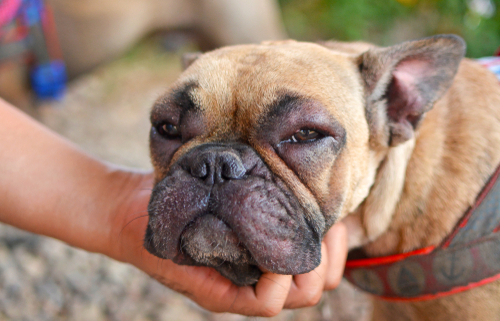Tips for Managing Fall Dog Allergies
Just like humans, dogs can show allergic symptoms when their immune systems begin to recognize that certain substances and allergens are a threat. Fall allergies can become an issue when your dog ingests allergens or when they encounter their skin. You may be wondering what dogs are allergic to during the Fall months. Veterinarians state that dogs may be allergic to ragweed pollens, mold, sagebrush, and plantain. This article will go into further detail about the common signs of Fall dog allergies and some tips on how you can manage them.
Common signs of fall dog allergies include:
- nasal and eye discharge
- puffy red eyes
- ear infections
- itchy eyes
- diarrhea
- coughing
- fur loss or color change
- sneezing
Below are some steps that you can take to manage Fall allergies:
The first step is to visit your veterinarian to make sure your dog doesn’t have a bacterial infection which may require medication.
Give your dog a nice bath after they have been outside for longer periods of time. Bathing will rinse the allergens away and make your dog feel much better.
Use over-the-counter eye irrigating solution to rinse your pet’s eyes if needed.
Do you have carpeting in your house? If so, vacuum all carpeting and upholstery. Also, wash pet and human bedding at least once a week.
Do not forget that diet is important! Provide a freshly prepared, whole food-based diet which contains fiber, vegetables, proteins, and healthy fats.
Pet allergies are no fun. However, there are things that you can do to ensure that your dog is overcoming the symptoms. You may have to try a variety of techniques, but you a little patience and consistency will go a long way!



